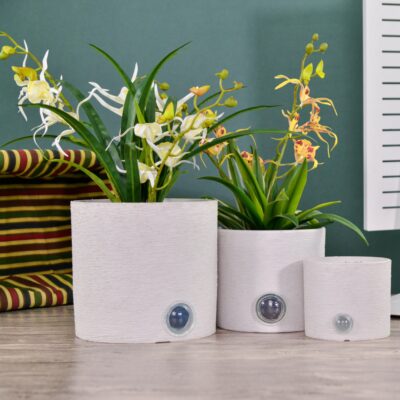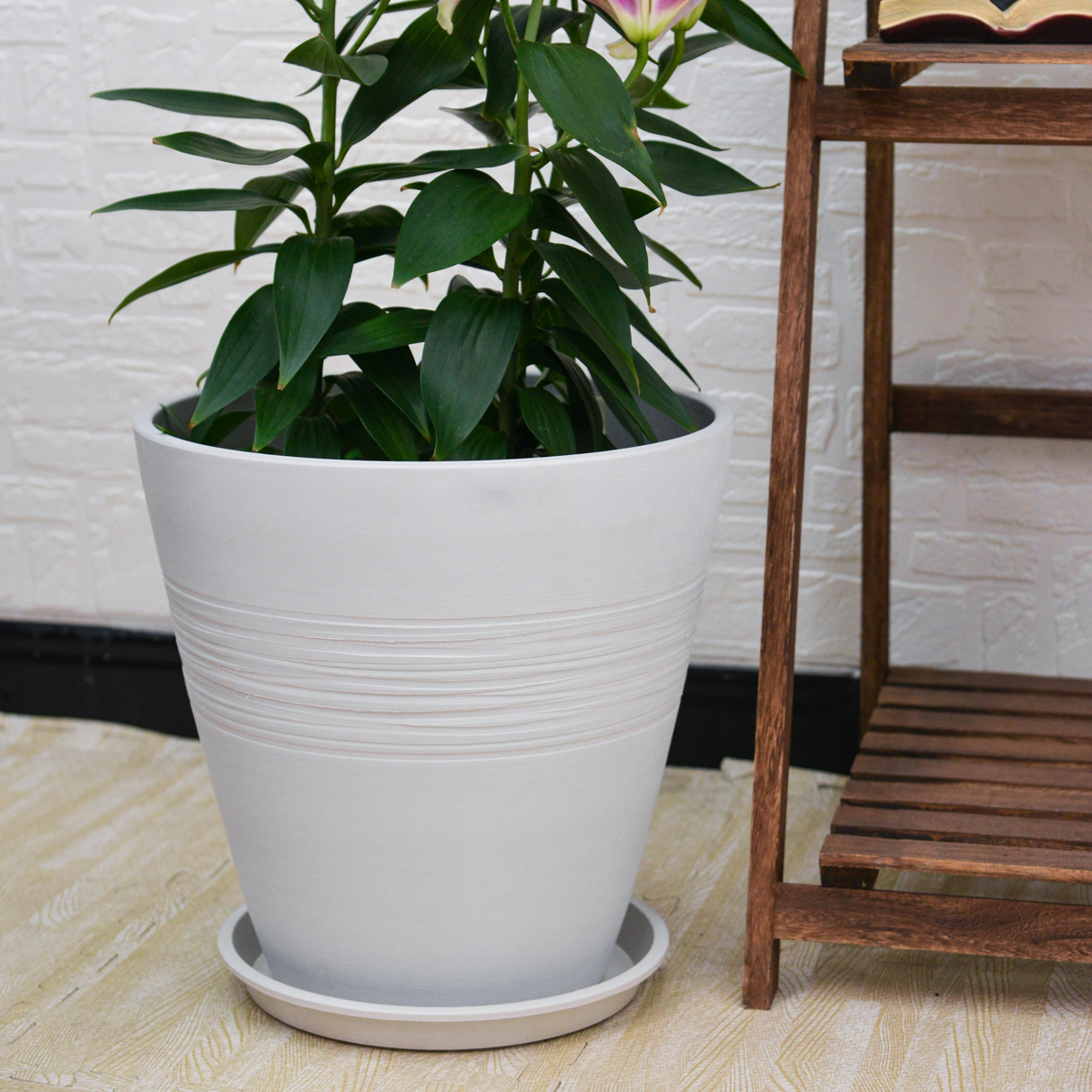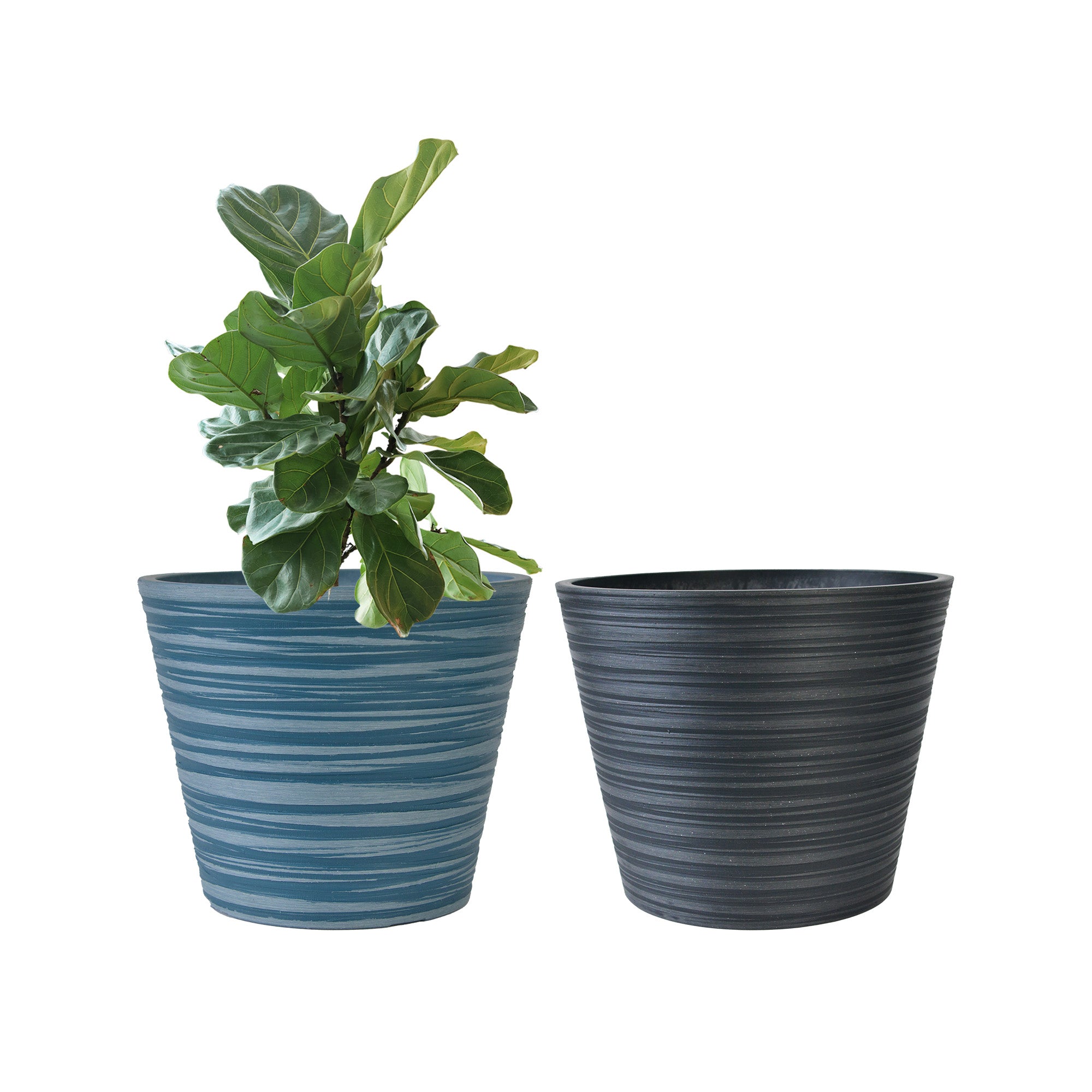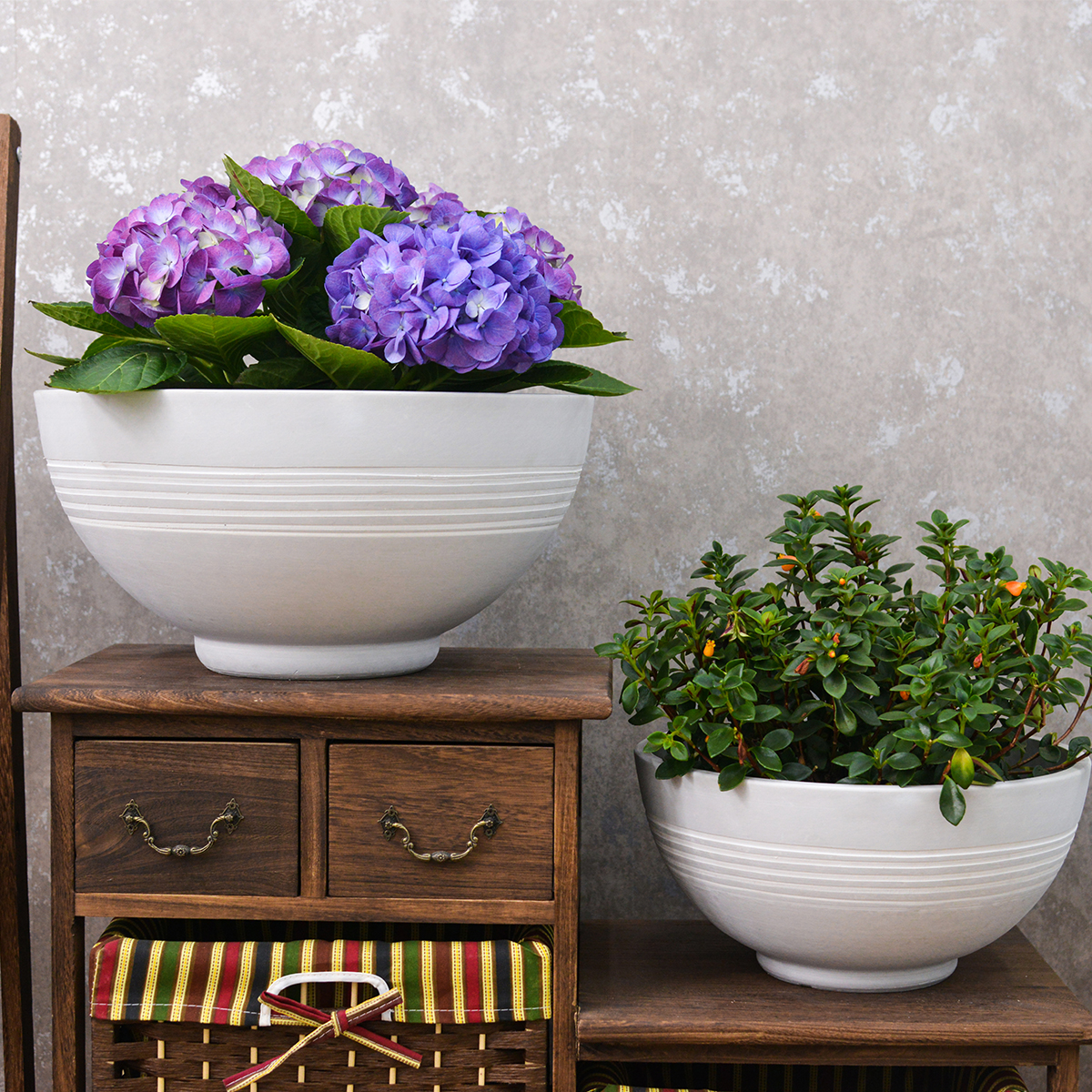How to keep plants alive while away for 2 months
Two months is a significant amount of time to be away from your plants! Keeping them alive and thriving will require a more robust approach than for shorter trips. Here’s a comprehensive guide on how to automatically water your plants for a 2-month vacation, combining different methods for best results:
For a 2-Month Absence, You’ll Need Reliable, Longer-Term Solutions. Simple DIY methods are unlikely to be sufficient for this duration unless you have very drought-tolerant plants and very large reservoirs.
Here are the best strategies, ranging from commercially available systems to combined approaches:
1. Advanced & Reliable Automated Systems (Best for 2 Months):
- Smart Watering Systems with Drip Irrigation: This is the most reliable and recommended method for a 2-month absence, especially in Singapore’s climate.
- How it works: Combines a smart Wi-Fi controller, soil moisture sensors, and a drip irrigation system. Sensors in your pots monitor soil dryness and tell the controller when to water, only when needed. The controller also often integrates with weather forecasts to skip watering if it rains, crucial in Singapore.1 You control and monitor everything remotely via a smartphone app.
- Pros for 2 Months:
- Most reliable & consistent watering over long periods.
- Weather-aware: Adjusts to Singapore’s unpredictable rainfall, preventing overwatering.
- Water-efficient: Drip irrigation targets roots, minimizing waste.2
- Remote monitoring & control: You can check on your plants and adjust watering from anywhere in the world.3
- Optimized plant health: Prevents both over and underwatering for the entire 2 months.
- Cons:
- Higher upfront cost: More expensive than other methods.
- More complex setup: Requires initial installation of sensors, controller, and drip lines.
- Tech-dependent: Relies on Wi-Fi and sensors functioning reliably for 2 months. Power outages could be a concern (consider battery backup for controller if outages are frequent in your area).
- Setup for 2 Months:
- Invest in a reliable Smart Watering Controller and Soil Moisture Sensors: Brands like Rachio (with compatible valve system), Eve Aqua (with Eve Aqua Control valve), or Netro are good options. Ensure compatibility with Singapore voltage if purchasing overseas.
- Install a Drip Irrigation System: Set up drip lines to each pot. Use adjustable emitters to customize watering for different plant types.
- Place Soil Moisture Sensors: Insert sensors into the soil of representative pots to monitor moisture levels.
- Connect to Wi-Fi and Configure App: Set up your controller, connect it to your home Wi-Fi, and configure watering schedules and sensor settings via the app.4
- Thorough Testing is Essential: Test the entire system for at least a week before you leave to ensure it’s working correctly, sensors are accurate, and the app is functioning as expected. Monitor water levels and plant health closely during testing.
- Consider a Backup Plan: While reliable, tech can fail. If possible, arrange for a trusted neighbor to check on your plants and the system once or twice during your 2-month absence as a backup.
- Where to buy: Online retailers (Amazon Singapore, Lazada), some specialized garden centers in Singapore. Search for “smart sprinkler controller,” “wifi drip irrigation system,” “soil moisture sensor wifi.”
2. Large Reservoir Drip Irrigation Systems with Timers:
- How they work: Uses a large water reservoir (like a large water tank or multiple interconnected buckets) connected to a drip irrigation system and controlled by a hose faucet timer.
- Pros for 2 Months:
- Large water capacity: A big reservoir can supply water for a significant period, potentially lasting for much of your 2-month trip, depending on plant needs and reservoir size.
- Water-efficient drip irrigation: Targets roots, conserving water.5
- Automated scheduling with timer: Provides regular watering based on your programmed schedule.6
- Less tech-dependent than smart systems: Timer is simpler and less prone to tech failures (but mechanical timers are less flexible).
- Lower cost than smart systems: More affordable than fully smart systems.
- Cons:
- Still Schedule-Based: Timer waters on schedule, not based on actual plant needs or weather. Requires careful schedule setting and might overwater if it rains a lot in Singapore.
- Reservoir size is critical: You need to calculate reservoir size based on plant water needs and trip duration. Underestimating reservoir size is a risk.
- Gravity-fed system: Reservoir needs to be elevated above plants for gravity to work effectively.
- No remote monitoring: You can’t check or adjust the system remotely.
- Setup for 2 Months:
- Calculate Reservoir Size: Estimate your plants’ total daily water needs and multiply by the number of days you’ll be gone (60 days). Add a buffer for safety. For example, if your plants need 1 liter total per day, for 60 days, you need at least 60 liters + buffer.
- Set up a Large Reservoir: Use a large water tank, multiple large buckets interconnected with tubing, or even a clean garbage bin as a reservoir. Ensure it’s food-grade plastic if possible.
- Elevate Reservoir: Place the reservoir on a table, stand, or elevated platform so it’s higher than your plants. Gravity will feed the water.
- Connect Drip Irrigation: Run tubing from the reservoir to your plants, using a drip irrigation kit. You might need to adapt a kit designed for faucet connection to work with a gravity-fed reservoir (gravity drip kits are also available). Use filters to prevent debris from clogging emitters.
- Install a Hose Faucet Timer (Optional but Recommended for Automation): While gravity can provide constant slow drip, a timer can add more controlled watering schedules. Place the timer between the reservoir and the drip lines. Set a schedule for short, frequent watering intervals (e.g., a few minutes multiple times a day, adjusted based on plant type and Singapore’s weather). If relying solely on gravity without a timer, you need to carefully adjust the drip rate at the emitters and ensure it’s slow enough to last.
- Test Thoroughly: Test the system for at least a week before leaving to ensure the reservoir is large enough, drip rate is correct, and the timer (if used) is programmed properly. Monitor water levels and plant health.
- Neighbor Check (Highly Recommended): For a 2-month trip with a gravity-fed system, it’s highly recommended to ask a trusted neighbor to check the reservoir level and plants every 2-3 weeks to refill the reservoir if needed and to check for any issues.
- Where to buy: Large water tanks/buckets from hardware stores, gardening centers, online. Drip irrigation kits and hose faucet timers from the same sources as above. Gravity drip kits specifically designed for reservoirs are also available online (search for “gravity drip irrigation kit”).
- Pros for 2 Months:
3. Combined Approach: Self-Watering Planters + Neighbor Assistance
- How it works: Repot most of your plants into large self-watering planters before you leave. Maximize the reservoir size of the planters. Combine this with asking a trusted neighbor or friend to check on your plants and refill the reservoirs once or twice during your 2-month absence.
- Pros for 2 Months:
- Relatively simple to set up: Repotting into self-watering planters is straightforward.
- Reduced watering frequency: Self-watering planters extend the time between waterings significantly.7
- Neighbor backup provides added security: Human check-in minimizes risk of system failure and ensures reservoirs are refilled.
- Lower tech complexity: No timers, sensors, or apps needed (unless you choose “smart” self-watering planters).
- Cons:
- Neighbor dependence: Relies on your neighbor being available and remembering to check in.
- Reservoir size limitation: Even large self-watering planter reservoirs have limited capacity. For very thirsty plants or hot weather, they might not last 2 months without refills.
- Still requires some neighbor intervention: Not fully automated for the entire 2 months.
- Repotting effort: Requires repotting plants before your trip, which takes time and effort.
- Setup for 2 Months:
- Repot into Large Self-Watering Planters: Choose the largest self-watering planters suitable for your plants. Use a good potting mix designed for self-watering.
- Water Thoroughly Before Leaving: Fill reservoirs completely before you depart. Water plants from the top initially as well.
- Brief your Neighbor Thoroughly: Clearly instruct your neighbor on how to check the water levels in the planters (if they have indicators), how to refill the reservoirs, and what to look for in terms of plant health. Leave clear instructions and emergency contact information. Provide them with watering cans and easy access to water.
- Schedule Neighbor Check-ins: Arrange for your neighbor to check on the plants and refill reservoirs maybe once every 3-4 weeks, depending on planter size, plant type, and typical weather in Singapore during your trip.
- Drought-Tolerant Plants: This method works best if you primarily grow plants that are reasonably drought-tolerant and don’t need constant high moisture.
- Where to buy: Large self-watering planters from garden centers, home stores, online.8
- Pros for 2 Months:
4. Longer-Duration DIY Wick Watering with Large Reservoirs (More DIY & Monitoring Required):
- How it works: Extends the wick watering method by using very large water reservoirs to sustain plants for a longer period.
- Pros for 2 Months:
- Potentially very low cost: Uses mainly DIY materials.
- Can create very large reservoirs: You can use buckets, tubs, or even larger containers as reservoirs to hold a significant amount of water.
- Consistent water delivery (if wicks work well): Wick watering can provide steady moisture.9
- Cons:
- DIY and less reliable for 2 months: More prone to failure than commercial systems for such a long duration.
- Wick performance can be inconsistent: Wicks can clog, degrade, or not wick water effectively enough for all plant types or pot sizes over 2 months.
- Very dependent on accurate reservoir sizing: You must accurately calculate reservoir needs and build a large enough reservoir. Underestimation is risky.
- No remote monitoring: You can’t check or adjust anything remotely.
- Higher risk of failure for a 2-month trip: DIY nature and wick reliability make this a riskier option for such a long absence unless you are very experienced with wick watering and thoroughly test your setup.
- Setup for 2 Months (If you choose this risky DIY route):
- Calculate Reservoir Size (Crucial): Accurately estimate plant water needs for 60 days and build reservoirs significantly larger than your estimate to account for evaporation, wick variations, and potential overestimation of drought tolerance.
- Use Large, Stable Reservoirs: Use large buckets, tubs, or containers as reservoirs. Ensure they are stable and won’t tip over.
- High-Quality, Thick Wicks: Use thick cotton rope, multiple strands of thick yarn, or specialized wicking fabric for better water transport over the long duration. Use multiple wicks per pot, especially for larger pots.
- Thorough Testing (Essential and Prolonged): Test your wick system for at least 2-3 weeks beforeleaving, under conditions mimicking your trip (similar temperature, light levels). Monitor water reservoir depletion rates and plant health extremely closely. Adjust wick thickness/number, reservoir size based on testing. Long-term wick performance can degrade, so a shorter test might not reveal issues that develop over 2 months.
- Neighbor Check-in (Absolutely Necessary): For a 2-month DIY wick system, it is essential to have a trusted neighbor check on the system and plants at least every 2 weeks. Wicks can fail, reservoirs can empty faster than expected, etc. Your neighbor needs to be prepared to troubleshoot and refill reservoirs if needed.
- Where to buy: Buckets/tubs from hardware stores. Thick cotton rope/yarn/wicking fabric from craft stores or online.
- Pros for 2 Months:

Summary Table: Automation Methods for 2 Months Away
| Method | Reliability for 2 Months | Water Efficiency | Cost | Setup Complexity | Remote Control | Neighbor Backup? | Best For |
| 1. Smart Drip Irrigation | Highest | Excellent | Higher | Moderate | Yes | Recommended | Tech-savvy, valuable plants, max reliability |
| 2. Large Reservoir Drip + Timer | High | Good | Medium | Moderate | No | Highly Recomm. | Water-conscious, larger gardens, timer control |
| 3. Self-Watering Planters + Neighbor | Medium-High | Good (Planters) | Medium | Low | No | Essential | Simpler setup, neighbor backup is key |
| 4. DIY Wick + Large Reservoir | Low-Medium | Fair (DIY) | Lowest | Moderate-High | No | Absolutely Essential | Very budget-conscious, DIY-inclined, high risk |
Crucial Pre-Vacation Steps (Regardless of Method):
- Water Plants Thoroughly Before Setup: Give all plants a good watering before setting up any automatic watering system.
- Move Plants to Optimal Location: Group plants together in a location with appropriate light conditions but potentially slightly shadier than usual to reduce water needs during your absence (especially if going away during the hottest months in Singapore).
- Prune and Mulch: Prune back any excessive growth. Mulch the soil surface in pots to help retain moisture and reduce evaporation.10
- Pest and Disease Check: Ensure your plants are healthy and pest-free before you leave to minimize problems while you’re away.
- Test Your System Extensively: Cannot stress this enough! Test any automated system for at least a week, ideally two, before you leave for 2 months. Monitor water levels, plant health, and adjust as needed. For a 2-month trip, prolonged testing is critical.
- Leave Clear Instructions for Neighbor (if applicable): If involving a neighbor, provide detailed written instructions, photos, emergency contacts, and practice with them beforehand.

Recommendation for 2 Months Away:
For a 2-month trip, investing in a Smart Watering System with Drip Irrigation is the most reliable and stress-free approach, especially if you have a valuable plant collection or want complete peace of mind. If budget is a major constraint, a Large Reservoir Drip System with a Timer combined with VERY RELIABLE neighbor check-ins is a decent second option, but requires more careful planning and monitoring by your neighbor. DIY wick systems are generally too risky for a 2-month absence unless you are highly experienced and have conducted very thorough, long-duration testing and have a committed and knowledgeable neighbor backup.
No matter which method you choose, thorough testing and a backup plan (ideally a neighbor check-in) are absolutely essential for keeping your plants alive and healthy during a 2-month vacation. Good luck, and enjoy your trip!
20T
By greenship|2024-08-13T06:42:22+00:00August 13, 2024|Categories: Hand-carving Series|
KC2-GS
By greenship|2024-08-16T06:30:21+00:00August 16, 2024|Categories: Hand-carving Series|
Planter 5 in W / 8 in W / 12 in W or Indoor Outdoor Plants, Modern Decorative Plant Pots with Drainage Hole, Decorative Flower Pots
By greenship-seo|2025-04-10T06:37:58+00:00January 16, 2025|Categories: Hand-carving Series|Tags: Decorative Flower Pots|
KC3-09k
By greenship|2024-08-16T06:24:36+00:00August 16, 2024|Categories: Hand-carving Series|
11TH
By greenship|2024-08-13T02:50:25+00:00August 13, 2024|Categories: Hand-carving Series|
20VD
By greenship|2024-08-13T06:43:41+00:00August 13, 2024|Categories: Hand-carving Series|






